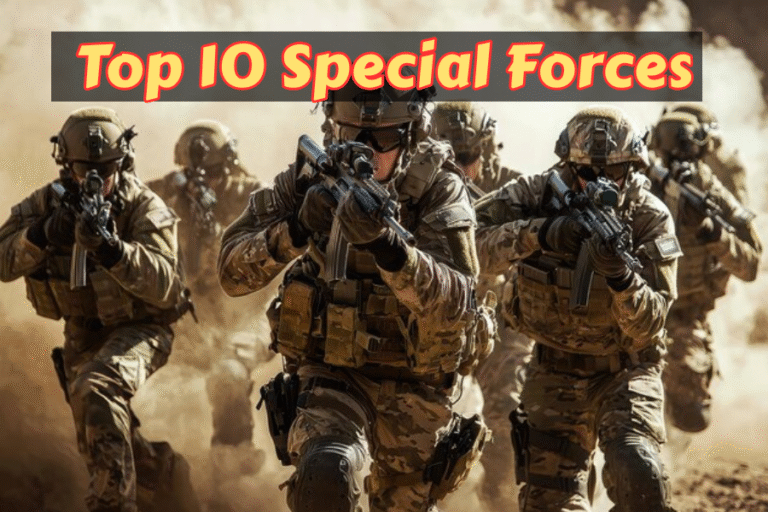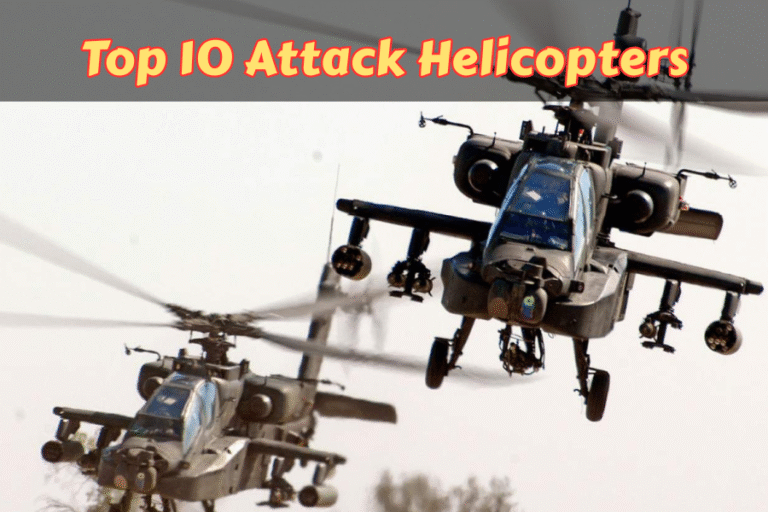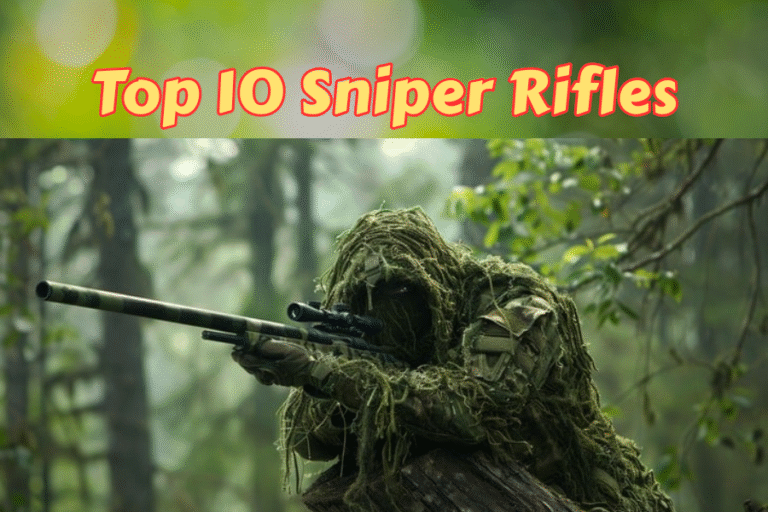(By Khalid Masood)
In the dynamic landscape of military operations, handguns remain vital secondary weapons for soldiers across the globe, offering quick access in close-range engagements, self-defense scenarios, and elite missions. As we navigate 2025, these sidearms prioritize traits like dependability in adverse conditions, ergonomic design for rapid deployment, and compatibility with modern attachments such as suppressors and optics. Armies from NATO nations to emerging forces select pistols that have demonstrated excellence in conflicts spanning decades, from historical battles to contemporary hotspots like Eastern Europe and the Middle East.
What defines the “best” handguns for military applications? Key factors include broad adoption by armed forces, proven track records in combat, technical attributes such as caliber versatility and ammunition capacity, and resilience against environmental challenges like dust, water, and temperature extremes. For example, the transition by several militaries toward modular platforms underscores a focus on adaptability, allowing customization for specific roles. Data from defense reports indicate that pistols chambered in 9mm dominate due to their balance of recoil management and lethality, with over 70% of modern army sidearms utilizing this round.
Military handguns function as backups to primary rifles, yet they are indispensable for pilots, vehicle crews, and special operations teams. Advantages often encompass high magazine capacities for sustained fire and lightweight materials to minimize soldier burden, while drawbacks might include caliber-specific limitations or higher maintenance needs. This countdown ranks the top 10 based on global usage, historical impact, and ongoing relevance in 2025, drawing from military evaluations, expert analyses, and deployment statistics. Whether exploring “what are the most reliable army pistols?” or “which handguns equip elite forces?”, this guide provides in-depth insights into these formidable tools.
10. Browning Hi-Power: The Pioneering High-Capacity Legend
Kicking off our countdown is the Browning Hi-Power, a design that revolutionized handgun capacity when it emerged in 1935 from the genius of John Moses Browning and FN Herstal in Belgium. As one of the earliest 9mm pistols with a double-stack magazine, it set standards for ergonomics and reliability that influenced generations of firearms. Even in 2025, its production continues in licensed forms, testament to its enduring appeal despite newer competitors.
Technical details highlight its strengths: It fires 9x19mm Parabellum rounds from a 13-round magazine, features a 4.7-inch barrel, weighs approximately 32 ounces unloaded, and measures 7.8 inches overall. The single-action mechanism ensures a crisp trigger pull, enhancing accuracy at ranges up to 50 yards.
This pistol sees service in numerous armies, including those of Canada, Australia, India, Thailand, and formerly the United Kingdom’s forces. It’s particularly valued in regions where legacy equipment persists due to cost-effectiveness and familiarity.
Strengths abound: Its slim profile aids concealability and quick draws, while the all-steel construction provides robustness in rugged terrains. The Hi-Power’s accuracy stems from a locked-breech system that minimizes recoil, making it suitable for prolonged engagements. However, limitations include its outdated single-action-only operation, which requires manual cocking, and a tendency toward wear in high-volume use without modern upgrades.
In historical contexts, the Hi-Power armed Allied troops during World War II and proved reliable in jungle warfare during Vietnam-era operations. Today, it’s often issued to reserve units or in training, where its mechanical simplicity aids instruction. For armies balancing budget and performance, it remains a solid choice.
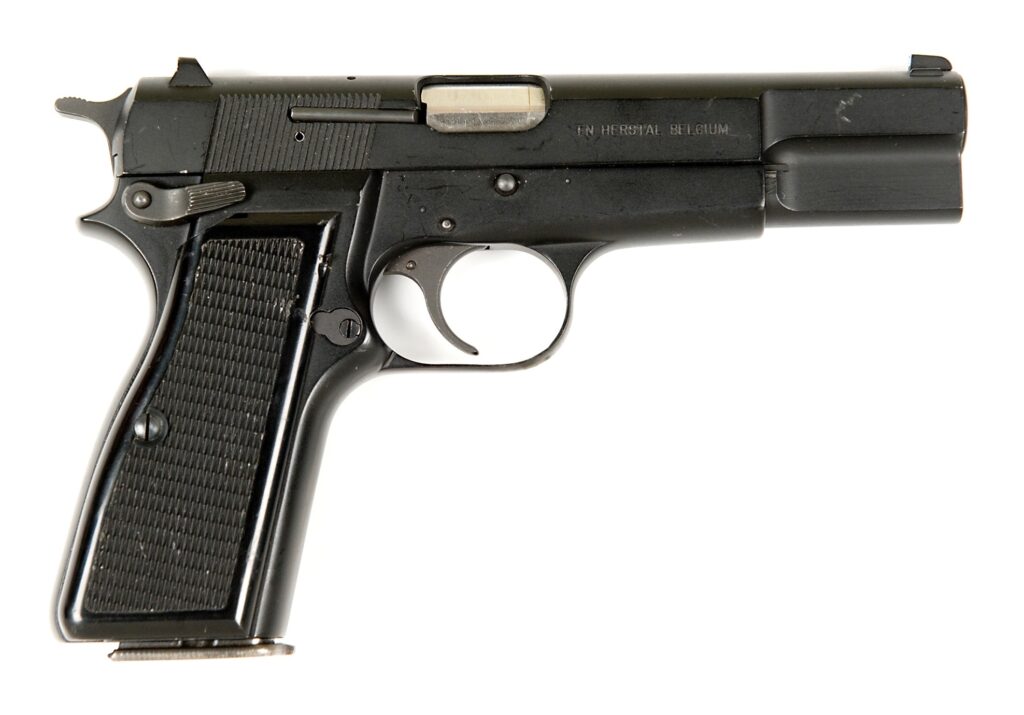
9. Smith & Wesson M&P: The Adaptable Polymer Performer
Next in line is the Smith & Wesson Military & Police (M&P) series, introduced in 2005 as a direct response to the demand for Glock-like reliability with enhanced user-friendliness. Crafted in the United States, this striker-fired pistol emphasizes modularity and comfort, making it a rising star in military circles by 2025.
Key specifications include a 9x19mm caliber, 17-round magazine capacity, 4.25-inch barrel, unloaded weight of 24 ounces, and overall length of 7.6 inches. The polymer frame incorporates interchangeable backstraps for grip customization, catering to diverse hand sizes.
Adoption spans the U.S. Drug Enforcement Administration (with military crossovers), South Korean police forces that support army operations, and select Belgian units. Its appeal lies in bridging law enforcement and military needs seamlessly.
Advantages feature a no-trigger-pull disassembly for safe maintenance, ambidextrous controls for left-handed users, and proven durability in drop tests exceeding military standards. The low bore axis reduces muzzle rise, facilitating faster follow-up shots. On the downside, some variants exhibit a spongy trigger feel that may require aftermarket tweaks, and it lacks the prestige of more established brands in elite selections.
Combat applications highlight its role in urban patrols and counter-narcotics missions, where quick deployment and high capacity prove crucial. As armies modernize, the M&P’s affordability and accessory compatibility position it for wider integration.
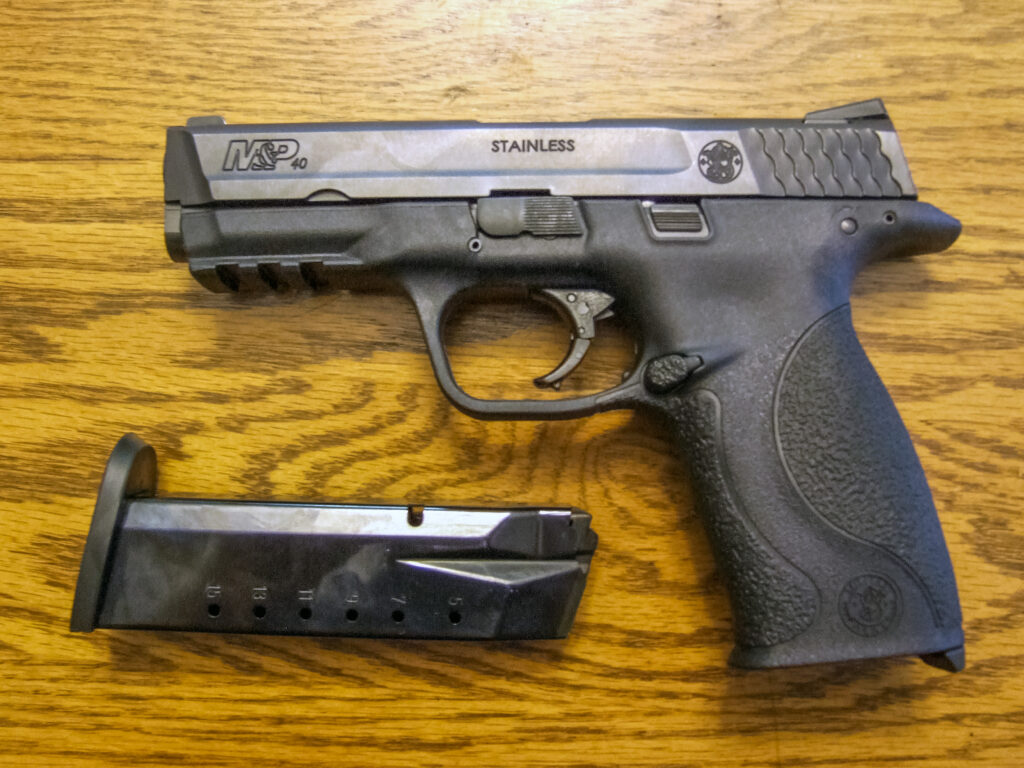
8. FN Five-seveN: The Innovative Armor-Penetrating Specialist
Ranking eighth is the FN Five-seveN, a Belgian innovation from FN Herstal dating back to 2000, designed specifically to counter body armor threats with its unique 5.7x28mm cartridge. This pistol’s lightweight build and high-velocity rounds make it a niche favorite for forces facing armored adversaries in 2025.
Specs encompass a 20-round magazine, 4.8-inch barrel, 21-ounce unloaded weight, and 8.2-inch overall length. The delayed blowback system ensures manageable recoil despite the round’s speed.
Users include the Belgian military, U.S. Secret Service (with protective details overlapping army roles), and various international special forces. Its adoption reflects a need for pistols that defeat Level IIIA armor at close range.
Pros highlight exceptional magazine capacity, minimal recoil for rapid fire, and extended effective range up to 100 yards. The polymer frame enhances portability. Cons involve limited ammunition availability in some theaters and debated stopping power compared to larger calibers like 9mm.
In operations against insurgents wearing vests, the Five-seveN excels, as seen in Middle Eastern deployments. Its suppressor compatibility further suits covert missions, solidifying its spot among top military options.
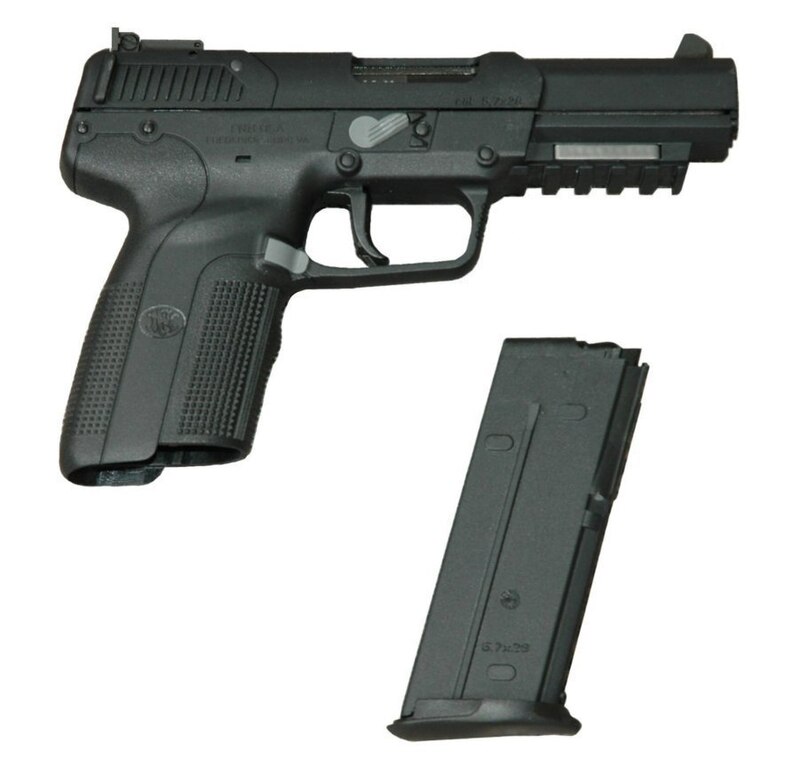
7. Heckler & Koch USP: The Recoil-Mastering Powerhouse
The Heckler & Koch Universal Self-loading Pistol (USP), launched in 1993 from Germany, earns its place with a proprietary recoil reduction mechanism that cuts felt recoil by up to 30%, ideal for sustained accuracy in demanding environments.
It supports multiple calibers including 9x19mm, .40 S&W, and .45 ACP, with magazine capacities of 12-15 rounds, a 4.25-inch barrel, 27-ounce weight, and 7.68-inch length. Variants allow for tactical customizations.
Armed forces like Germany’s Bundeswehr, Ireland’s Defence Forces, Greece, and Spain rely on it for its versatility across roles from standard issue to special ops.
Benefits include ambidextrous features, extreme reliability in mud and sand (passing NATO torture tests), and caliber flexibility for mission-specific loads. Drawbacks encompass a bulkier grip that may not fit smaller hands and higher acquisition costs.
Proven in desert and arctic conditions, the USP’s design influences modern pistols, making it a benchmark for engineering excellence in military handguns.
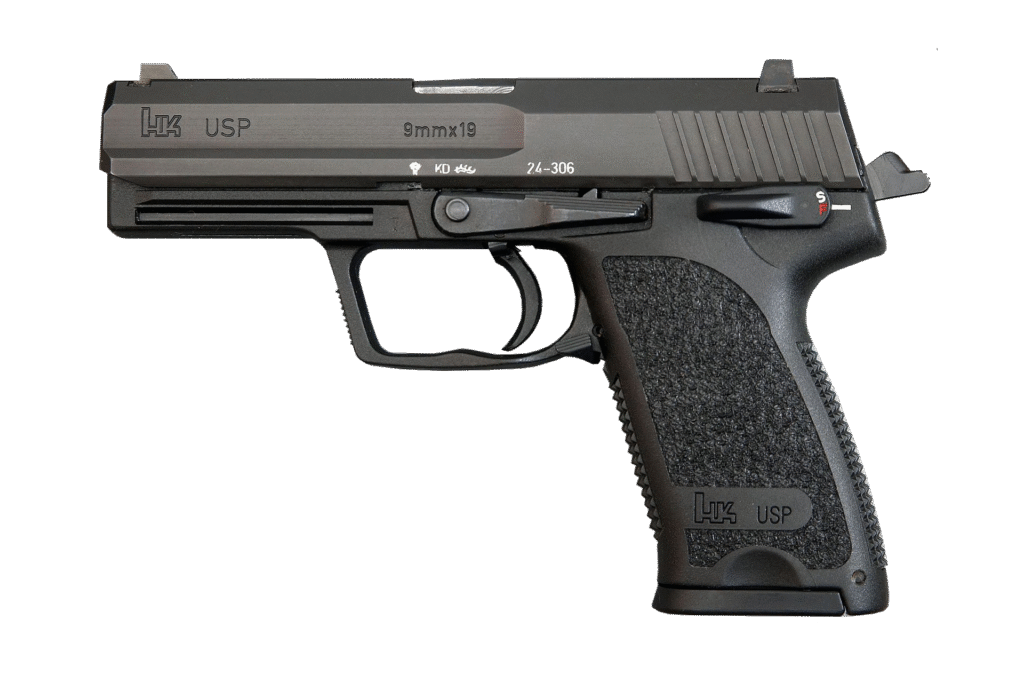
6. CZ 75: The Robust Eastern European Staple
From the Czech Republic, the CZ 75 debuted in 1975 during the Cold War era, gaining fame for its all-steel durability and smooth double-action trigger. By 2025, its variants continue to equip forces valuing traditional craftsmanship with modern updates.
Featuring 9x19mm caliber, 16-round capacity, 4.6-inch barrel, 35-ounce weight, and 8.1-inch length, it’s built for precision.
Primary users are the Czech and Slovak armies, alongside Brazil, Chile, Egypt, and Lithuania, where it’s standard for infantry and police-military hybrids.
Strengths lie in its ergonomic slide-in-frame design for low recoil, affordable production, and legendary trigger pull that rivals custom guns. Limitations include added weight compared to polymers and absence of built-in rails on older models.
Its combat heritage includes post-Soviet conflicts, where reliability in harsh winters proved invaluable. Widely cloned, the CZ 75’s influence underscores its timeless utility.
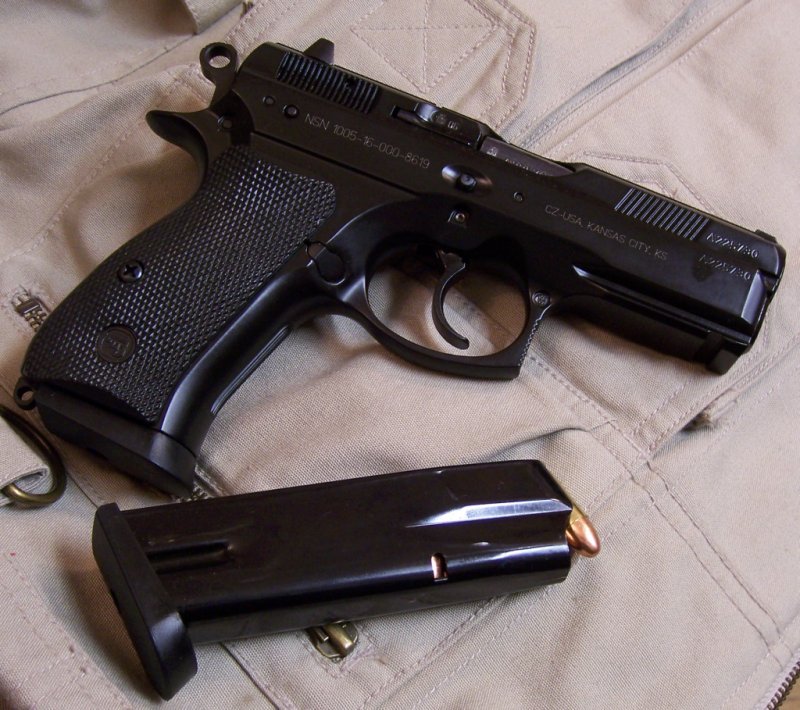
5. Sig Sauer P226: The Versatile Elite Operator’s Choice
The Sig Sauer P226, introduced in 1984 from Switzerland (now U.S.-produced), narrowly missed U.S. adoption but became synonymous with special forces for its double/single-action flexibility and robust build.
It chambers 9x19mm with 15 rounds, a 4.4-inch barrel, 34-ounce weight, and 7.7-inch length, including a decocker for safe loaded carry.
Elite units like U.S. Navy SEALs (historically), UK SAS, Polish GROM, and French GIGN favor it for wet-weather performance.
Pros feature high accuracy from a short-reset trigger, corrosion resistance for maritime ops, and easy field-stripping. Cons include a longer double-action pull and heftier profile.
In hostage rescues and amphibious assaults, its dependability shines, cementing its status among top-tier military pistols.
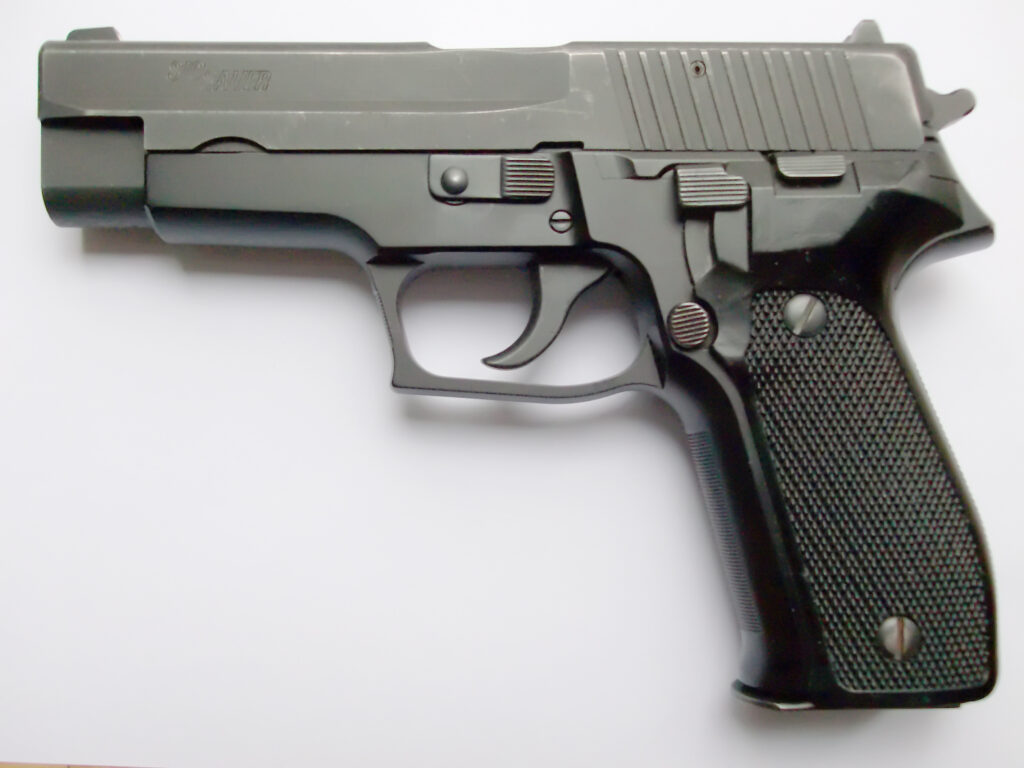
4. Colt M1911: The Iconic .45 Caliber Veteran
The Colt M1911, engineered by John Browning in 1911, embodies raw stopping power with its .45 ACP round, serving U.S. forces through major wars and persisting in specialized roles in 2025.
Specs: 7-8 round magazine, 5-inch barrel, 39-ounce weight, 8.5-inch length, single-action.
Current users include U.S. Marine Raiders, Delta Force, Philippines, and Argentina.
Advantages: Devastating impact per shot, customizable ergonomics, and battle-proven resilience. Disadvantages: Limited capacity, stout recoil, and intricate maintenance.
From trenches to modern raids, its legacy as a “man-stopper” endures.
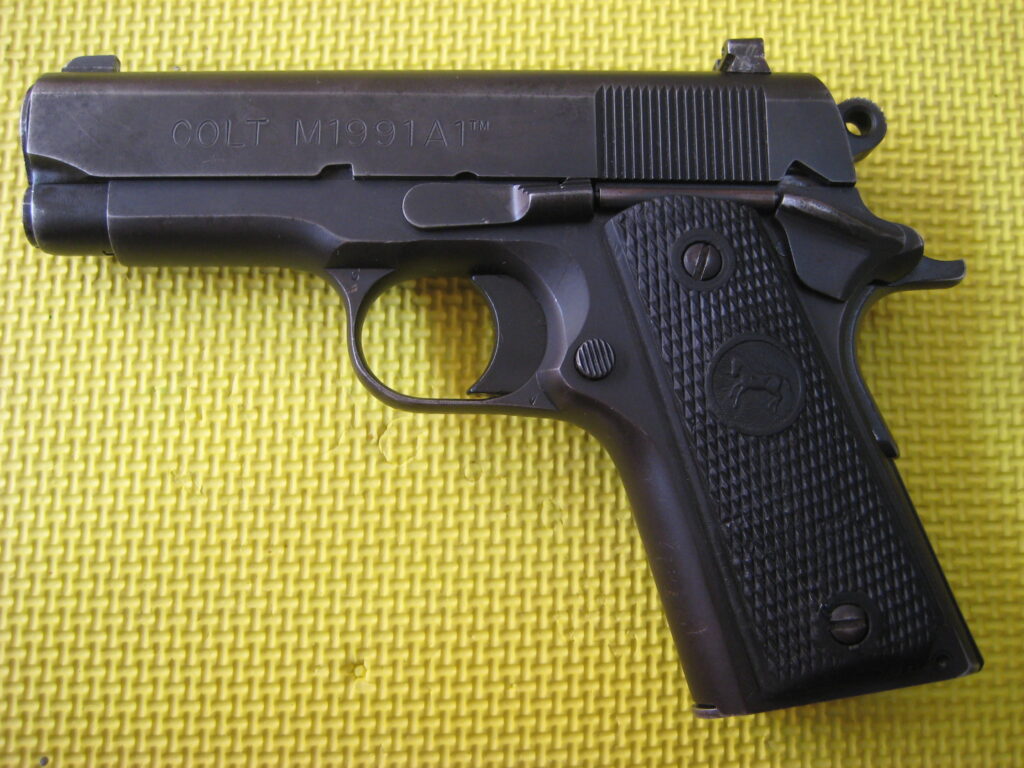
3. Beretta 92FS (M9): The Long-Serving NATO Icon
The Beretta 92FS, known as the M9 in U.S. service, has been a military mainstay since 1985. Originating from Italy’s Beretta in 1975, it evolved from earlier models and won the U.S. Joint Service Small Arms Program, serving through Desert Storm, Iraq, and Afghanistan until phased out in 2017.
Specifications: Caliber: 9x19mm; Magazine Capacity: 15 rounds; Barrel Length: 4.9 inches; Weight: 33.3 oz; Overall Length: 8.5 inches; Action: Double/single-action, semi-automatic.
Armies Using It: U.S. military (former standard, still in reserves); Italy, France (as PAMAS G1), Egypt, and various NATO forces.
Pros: Open-slide design minimizes jams; low recoil for accurate shooting; durable alloy frame; easy to disassemble without tools.
Cons: Bulky for concealed carry; slide-mounted safety can be awkward; heavier than polymer alternatives.
With over 35 years of service, the M9’s reliability in sandy environments made it legendary, though it’s now yielding to modular pistols.
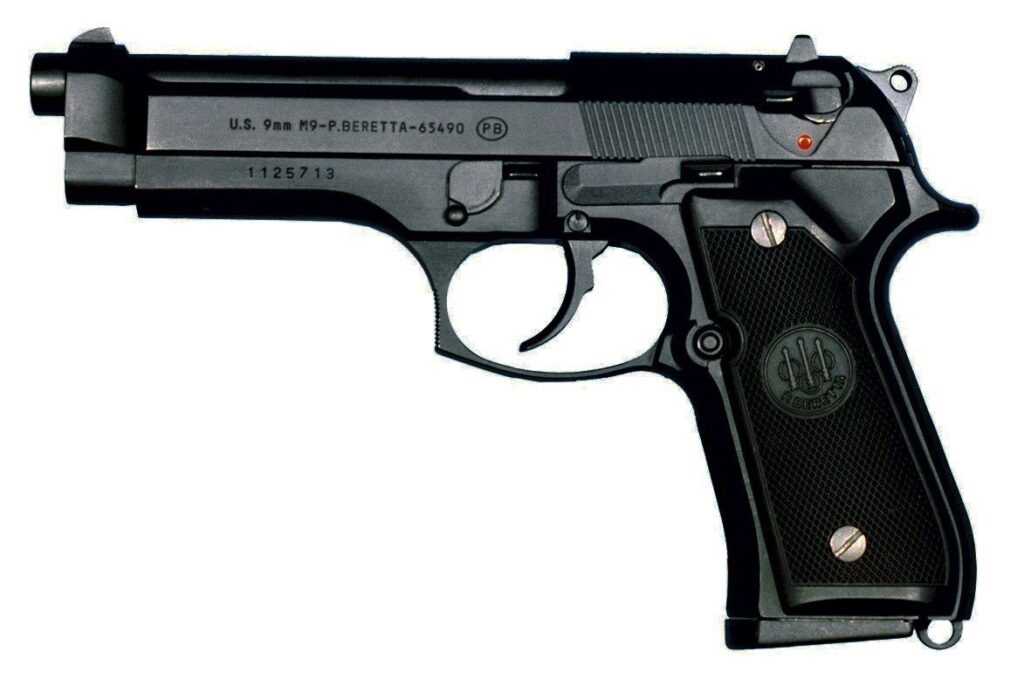
2. Sig Sauer P320 (M17/M18): The Modern U.S. Army Standard
The Sig Sauer P320, designated M17 (full-size) and M18 (compact) by the U.S. military, represents the cutting edge of modular handguns. Launched in 2014, it won the U.S. Army’s Modular Handgun System (MHS) competition in 2017, replacing the Beretta M9 after a rigorous trial involving over 1 million rounds. By 2025, its customizable fire control unit allows swapping frames, making it adaptable for diverse missions.
Specifications: Caliber: 9x19mm; Magazine Capacity: 17-21 rounds; Barrel Length: 4.7 inches (M17); Weight: 29.4 oz; Overall Length: 8 inches; Action: Striker-fired, modular.
Armies Using It: U.S. Army, Navy, Air Force, Marines (standard issue since 2018); also adopted by Denmark and some Canadian special units.
Pros: Highly modular—change grip size, caliber, or add optics/red dots easily; excellent ergonomics with interchangeable backstraps; ambidextrous controls; proven in extreme tests (e.g., -40°F to 140°F). Its accuracy and low bore axis reduce muzzle flip.
Cons: Early models had drop-safety issues (resolved by 2018); heavier than some compacts; requires training for modularity to avoid errors.
The P320’s adoption marked a shift toward future-proof designs, with over 500,000 units issued to U.S. forces by 2025. In operations like those in Syria, its suppressor-ready threaded barrel and night sights enhance stealth capabilities.
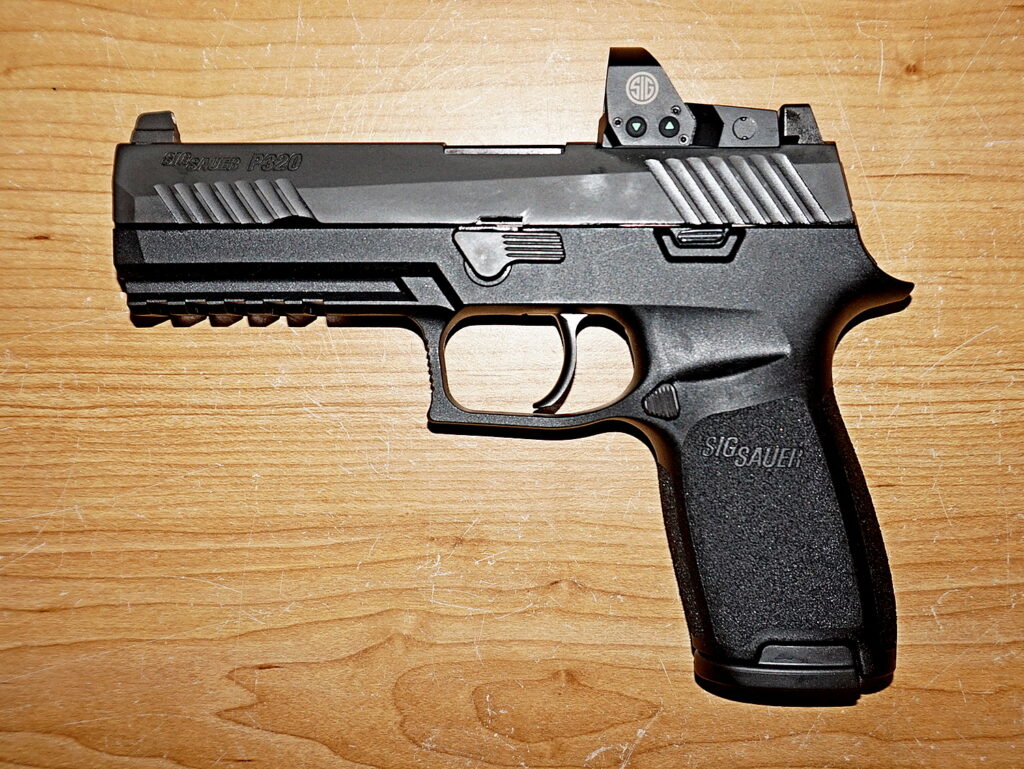
1. Glock 17: The Unrivaled Global Dominator
1. Glock 17: The Ubiquitous Military Workhorse
The Glock 17 stands as the pinnacle of modern military handguns, renowned for its simplicity and indestructibility. Introduced in 1982 by Austrian manufacturer Glock Ges.m.b.H., it was designed for the Austrian Army and quickly revolutionized pistol design with its polymer frame and “Safe Action” trigger system. By 2025, it remains a staple due to its evolution through generations, incorporating features like optics-ready slides and enhanced ergonomics.
Specifications: Caliber: 9x19mm Parabellum; Magazine Capacity: 17 rounds (standard); Barrel Length: 4.49 inches; Weight: 25.06 oz (unloaded); Overall Length: 8.03 inches; Action: Striker-fired, semi-automatic.
Armies Using It: Adopted by over 60 countries, including the U.S. (Delta Force, Marine Special Operations), UK (British Army), Austria (standard issue), Sweden, Finland, Norway, Poland, Australia, and many NATO allies. It’s also favored by Russian Spetsnaz in some variants.
Pros: Exceptional reliability (jammed only once in 10,000 rounds during initial tests); lightweight polymer construction reduces fatigue; easy maintenance with minimal parts; affordable and modular for attachments like suppressors or lights. Its “pointability” allows intuitive aiming, making it ideal for high-stress combat.
Cons: Lacks a traditional manual safety, which some users find risky; grip angle may not suit all hand sizes without aftermarket adjustments; perceived as “basic” compared to more feature-rich competitors.
In combat, the Glock 17 has proven itself in Iraq, Afghanistan, and Ukraine, where its dust resistance shines. Special operations forces appreciate its low recoil for rapid follow-up shots. As one Delta Force operator noted, “It just works—no excuses.”
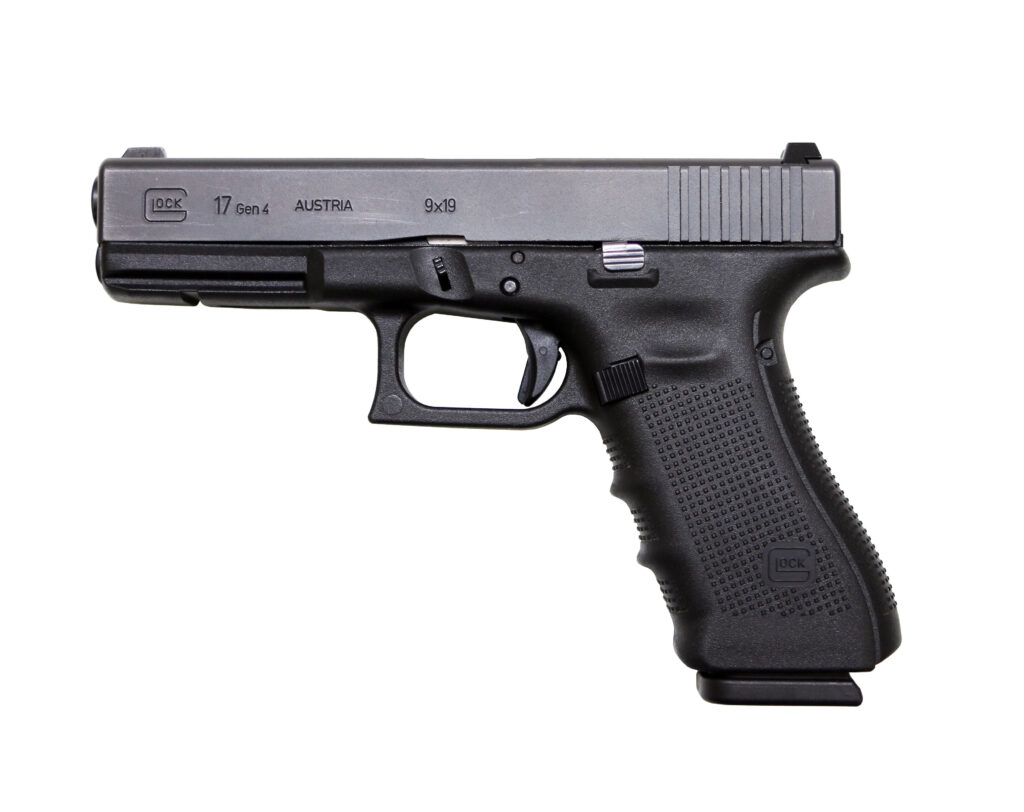
Conclusion: Countdown to Excellence in Military Sidearms
This reverse ranking from 10 to 1 showcases the spectrum of army handguns, from classics like the Browning Hi-Power to innovators like the Glock 17. In 2025, emphasis on modularity and reliability shapes selections amid evolving threats. These pistols not only arm soldiers but embody engineering triumphs.



